Important links
Abstract
Fundamental to research on political violence is a conceptual framework to identify and trace patterns of violence. The dimension of targeting has received considerable attention as research investigating these patterns have incorporated observations about the intention behind attacks. We contribute to this research agenda by proposing a taxonomy of targeting, which can be applied in political violence cases, from the typically high-intensity violence of civil war to the usually low-intensity violence of militant social movements. We position this targeting taxonomy in relation to the broader conceptual property space comprising patterns of political violence. To test the utility of our conceptual framework, we applied it to coding novel data on far-right political violence in Italy from 2013 to 2020. Our results reveal the trends of sustained political violence within a stable democracy like Italy. It is worth noting that Italy has less political stability than other European countries, most visible in the relatively frequent change of government. Nevertheless, its democratic system is stable: violent groups and individuals act violently, but target more situationally and collectively, less indiscriminately; the violence itself is typically non-critical; and, characteristic of far-right violence, it is directed more often against people than property. Our findings speak to the role of politically violent organisations within stable democracies, where violence is less intense than amid armed conflicts but nevertheless a menace to some social groups.
Article figures
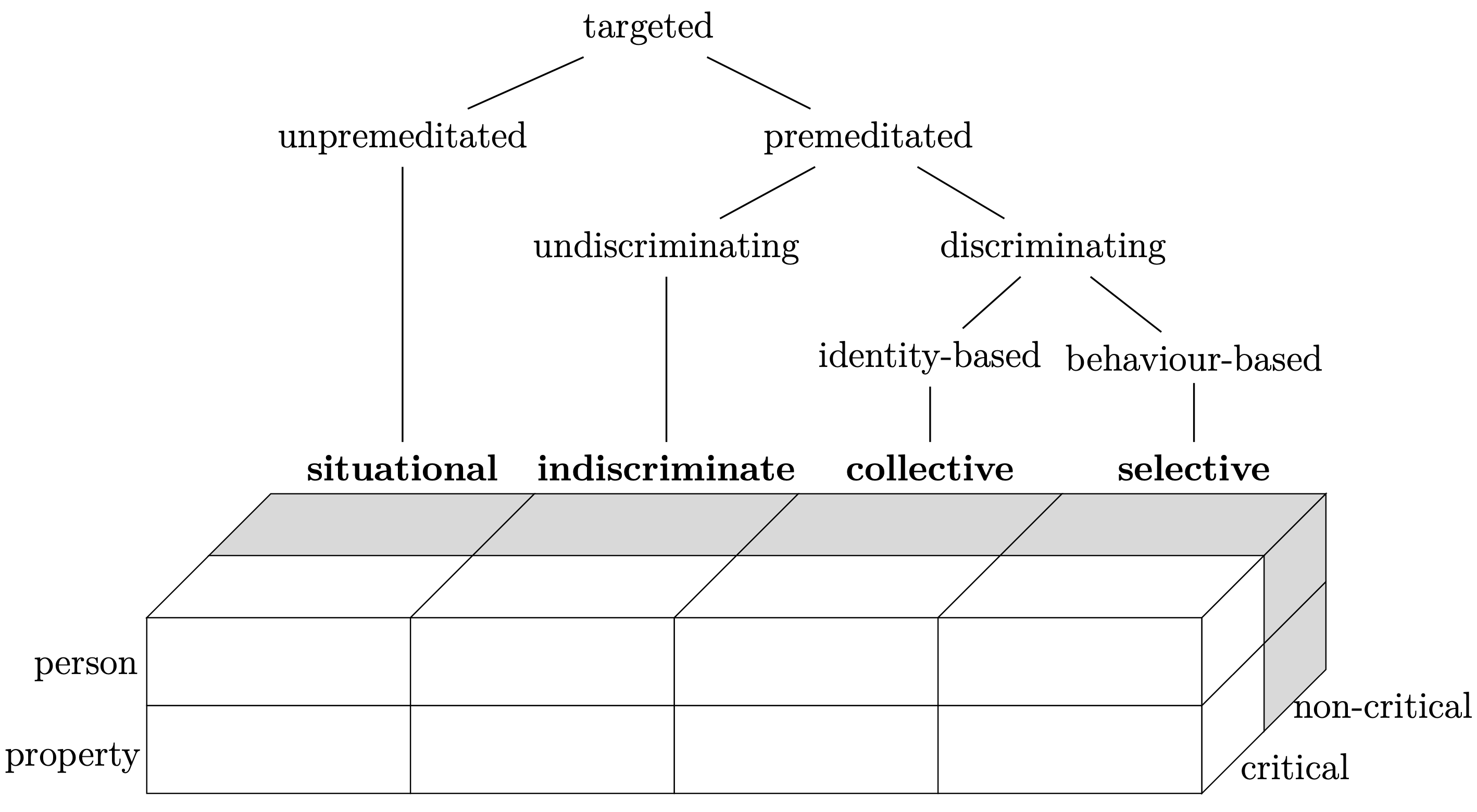
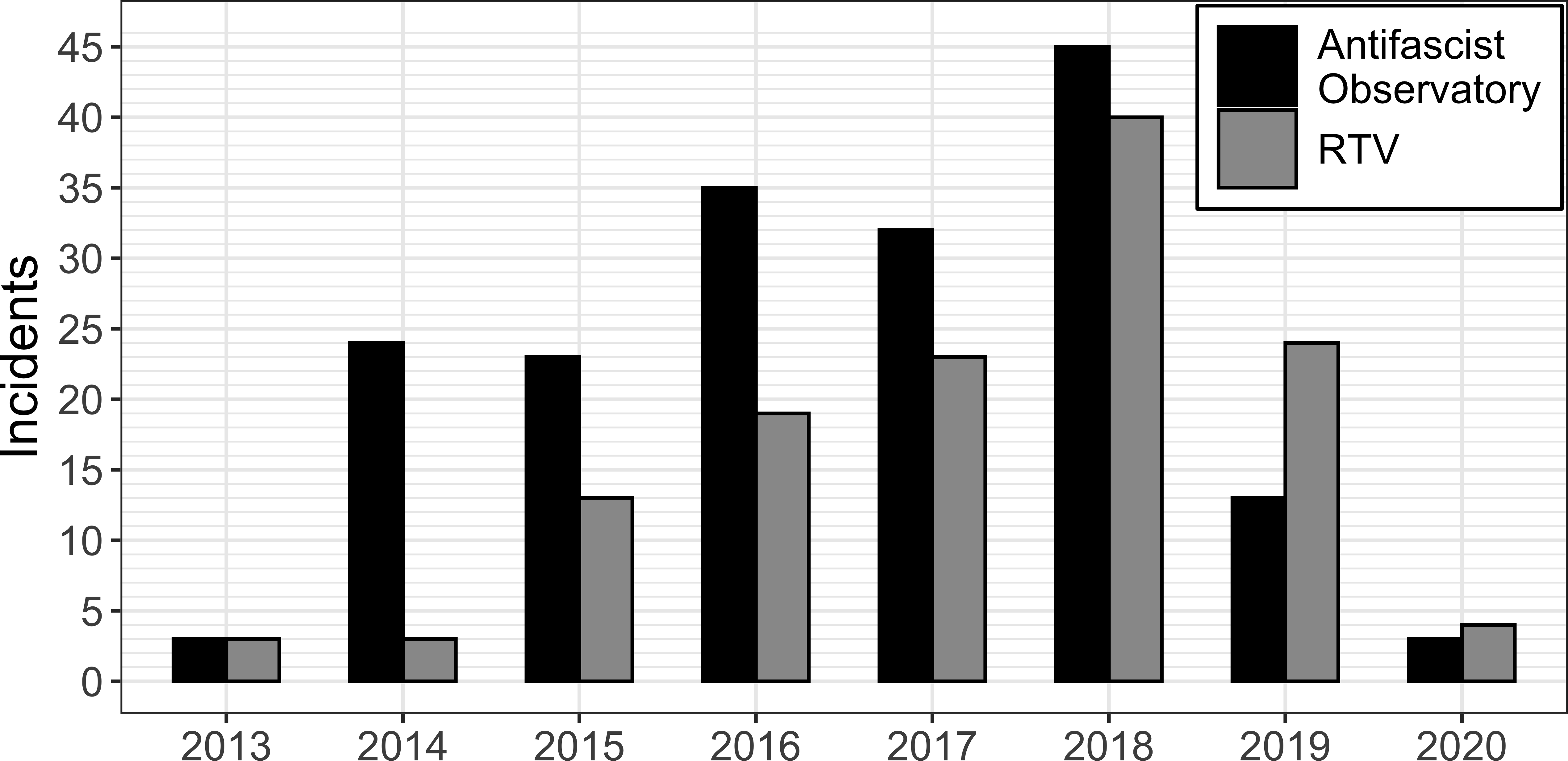
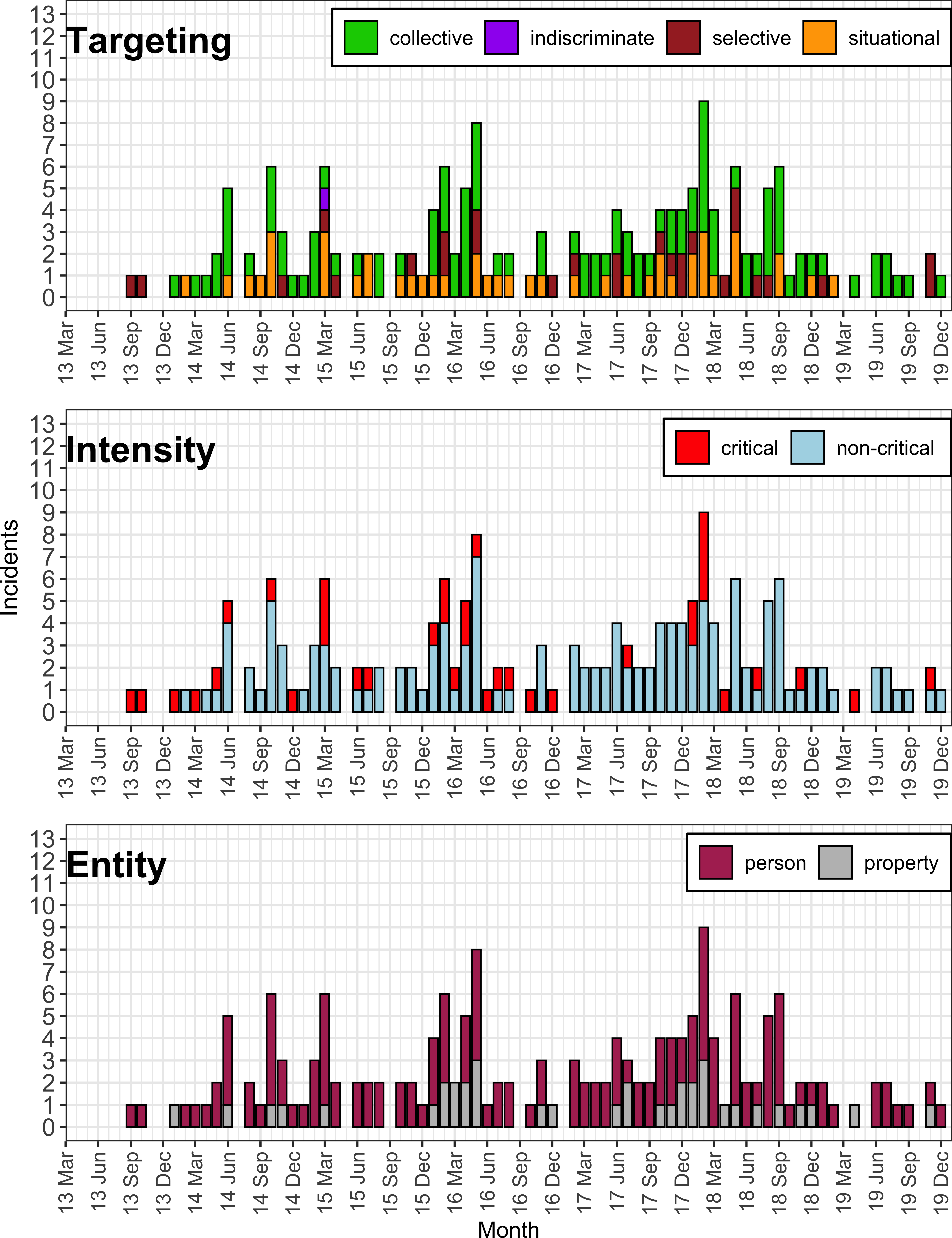
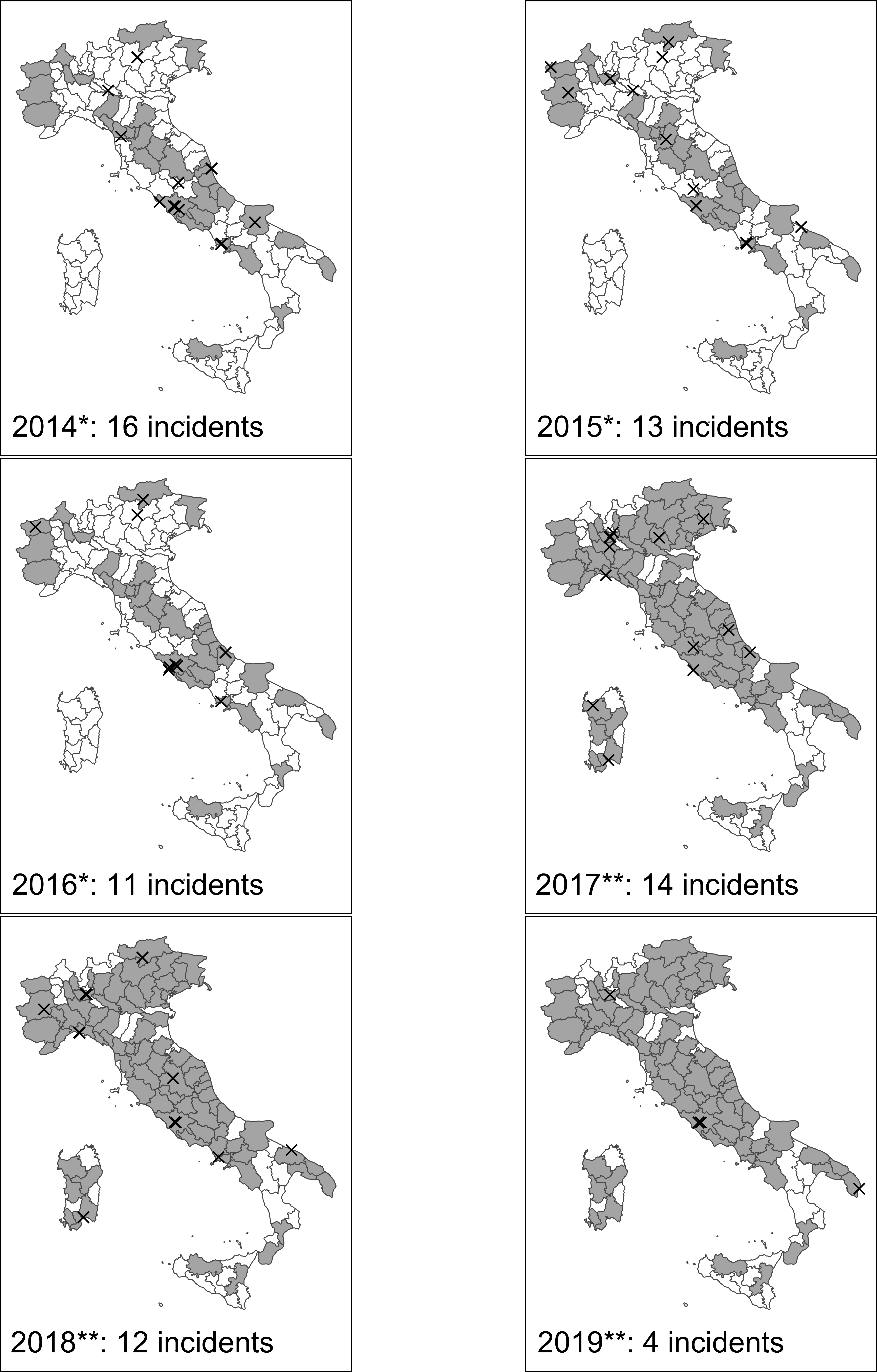
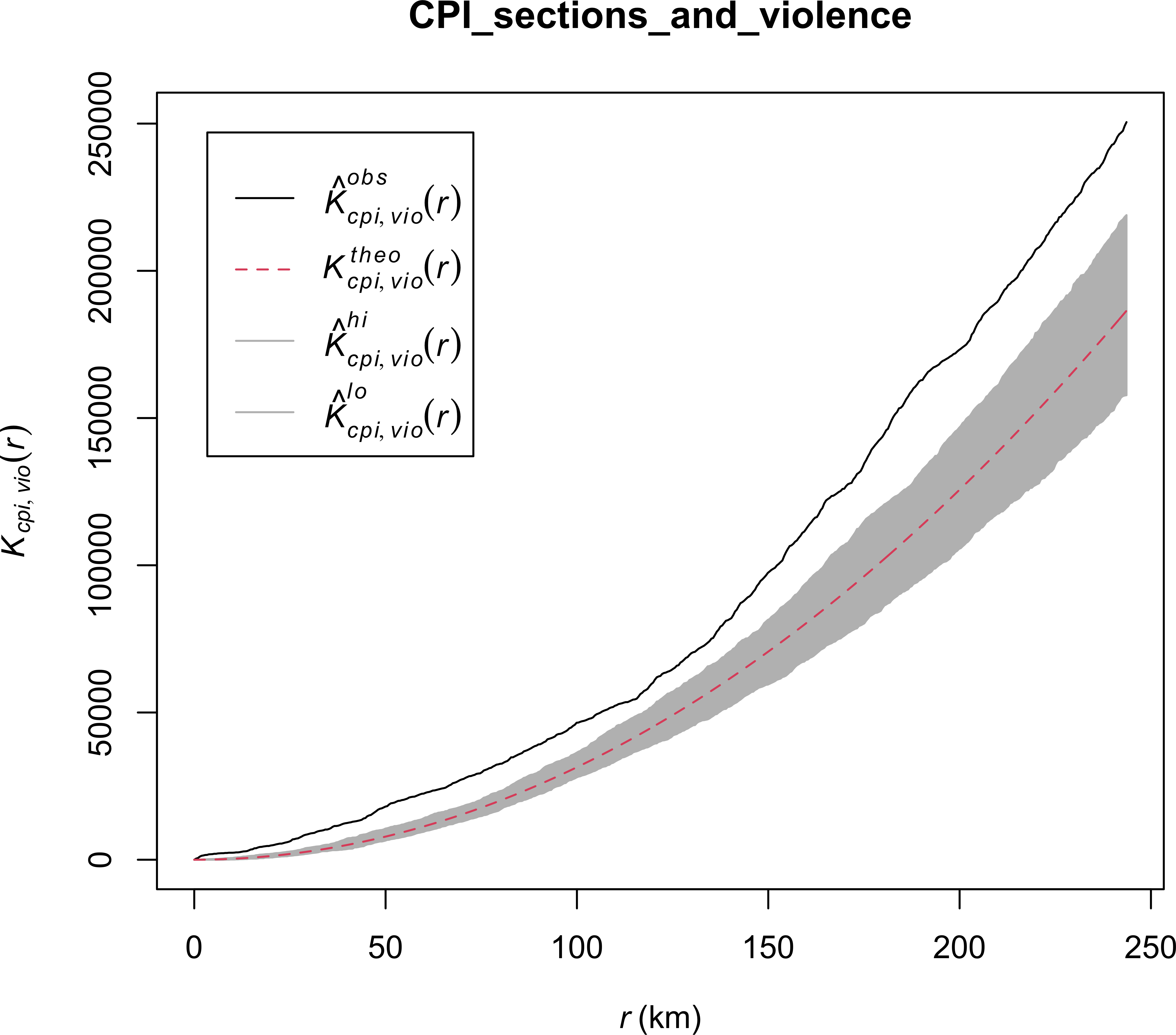

Citation
@article{ZellerNoschese2025,
title={Targeting Taxonomy and Patterns of Political Violence in Stable Societies: Evidence from the Far Right in Italy},
author={Zeller, Michael C and Noschese, Pasquale},
journal={Terrorism and Political Violence},
volume={0},
number={0},
pages={1-20},
year={2025},
publisher={Sage}
}